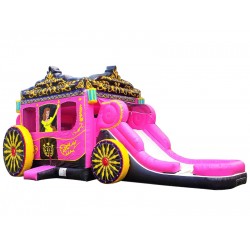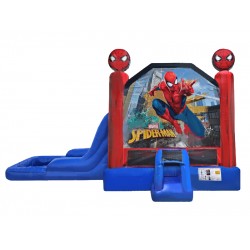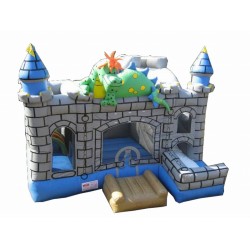What Are the Best Anchoring Methods for Installing Jumping Castles?

Properly anchoring a jumping castle is essential to ensure the safety of children using it. The choice of anchoring method largely depends on the surface on which the castle is installed. Here are some of the best anchoring methods to consider for different environments.
1. Using Stakes for Grass or Soft Ground
One of the most common anchoring methods is using metal stakes when the jumping castle is installed on grass or other soft surfaces like dirt or sand. Stakes are driven deep into the ground, typically at an angle, to provide strong resistance against movement.
Key points:
- Use at least 30cm long metal stakes for secure anchoring.
- Drive the stakes into the ground at a 45-degree angle for better hold.
- Check the ground for stones or roots that may prevent the stakes from going in fully.
2. Sandbags or Water Weights for Hard Surfaces
When installing a jumping castle on a hard surface like concrete, tiles, or asphalt, stakes are not an option. In these cases, sandbags or water weights are used to anchor the inflatable.
Key points:
- Use heavy-duty sandbags or fillable water weights to secure the castle.
- Place the weights at each anchoring point around the base of the inflatable.
- Ensure the bags or weights are heavy enough to hold the castle in place, especially during windy conditions.
3. Anchoring to Fixed Structures
In some cases, the jumping castle can be anchored to fixed structures, such as nearby fences, trees, or other solid objects. This is useful when the surface may not allow stakes or when additional stability is required in windy conditions.
Key points:
- Use heavy-duty ropes or straps to secure the inflatable to the structure.
- Ensure the structure is stable and won’t move or fall under tension.
- Check the integrity of the ropes or straps to prevent breakage during use.
4. Additional Considerations for Windy Conditions
In windy environments, extra care must be taken to ensure the jumping castle remains securely anchored. Using longer stakes, heavier sandbags, or multiple anchor points can help prevent the inflatable from becoming a safety hazard.
Key points:
- Consider using a wind meter to assess if conditions are safe for the jumping castle setup.
- If wind speeds exceed recommended safety limits (usually around 25 km/h), it is best to deflate the castle and postpone its use.
- Double-check all anchor points for security if the wind picks up during use.
5. Indoor Anchoring Methods
When setting up a jumping castle indoors, hard surfaces like concrete or gym floors often require the use of sandbags or water weights as well. Indoor setups typically provide a more controlled environment, but you should still ensure that the inflatable is securely anchored, as children’s movement can cause it to shift.
Key points:
- Use sandbags or water weights to anchor all points of the castle.
- Ensure there’s enough clearance between the inflatable and walls or ceilings.
- Inspect the anchor points periodically, especially if the castle is in use for extended periods.
Conclusion
Anchoring a jumping castle properly is critical for ensuring safety during use. Whether you’re installing on grass, hard surfaces, or indoors, using the right method—stakes, sandbags, or securing to fixed structures—helps to keep the castle stable and safe. Additionally, always consider weather conditions like wind, and ensure that all anchor points are secure before allowing children to use the inflatable.




Leave a Comment